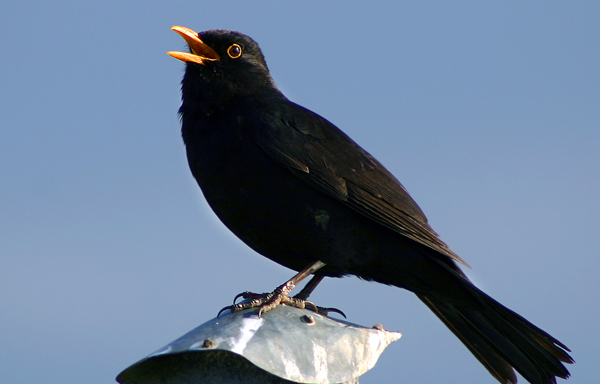SAN FRANCISCO — City lights can deliver male birds into reproductive readiness weeks ahead of schedule.

Male European blackbirds monitored in a lab under simulated city lighting started secreting increased levels of testosterone and growing their sexual organs up to a month earlier in the spring than birds kept in country-style darkness, Davide Dominoni of the Max Planck Institute for Ornithology in Radolfzell, Germany, reported January 6 at the annual meeting of the Society for Integrative and Comparative Biology.
Dominoni’s colleagues have found that, outside the lab, male blackbirds flying around Munich undergo this growth surge about three weeks earlier than counterparts in a forest just 40 kilometers out of town.
Beginning in December 2010, the researchers exposed captive blackbirds to night light levels typical of urban settings. They estimated those levels by outfitting free-flying blackbirds with light-sensitive devices and averaging the urban light exposure. A winter of lab night light sped up the males’ molting and boosted testosterone levels as well as organ development in spring. Continuing the night light treatment through the next winter left the males reproductively shut down in the spring of 2012.
The lab night lights probably kept the birds’ seasonal reproductive clocks from resetting at the end of the first breeding season, Dominoni says. That second-year suppression may not be common in the real world, where birds fly around and experience more variety in night lighting, he says. But he sees the lab breeding shutdown as a sign of how big of an impact artificial light might have.
“There’s no shortage of starlings and other birds in cities,” said Jamie Cornelius of the University of California, Davis: Urban birds can reproduce despite artificial lights, and Cornelius says she’d love to know what lets them manage when the lab birds couldn’t.
Maybe the results hold a nugget of inspiration for some kind of light-driven control for nuisance birds, mused Ned Place of Cornell University. Perhaps blasts of illumination in certain urban places on a certain series of nights could discourage overpopulation by less-beloved avian residents.





